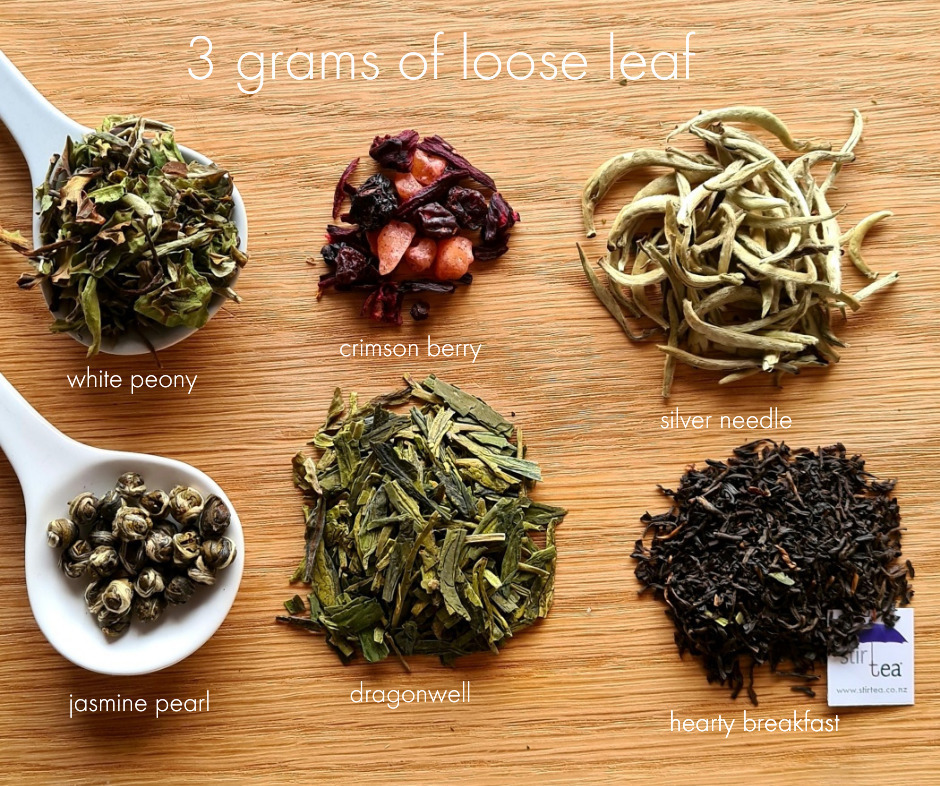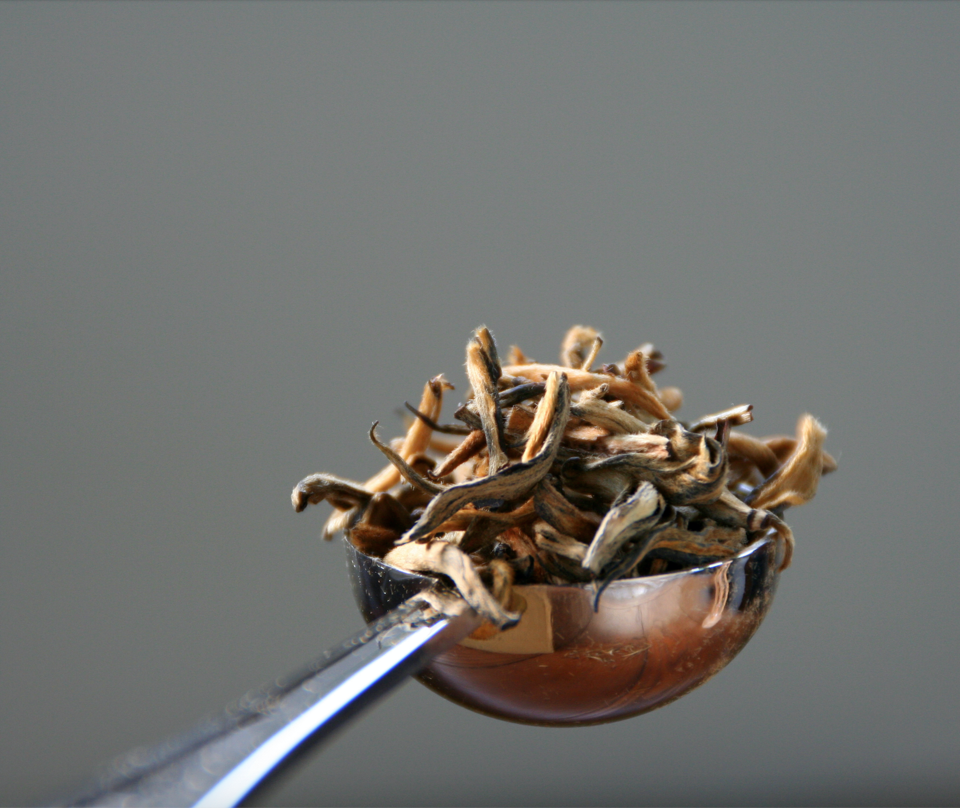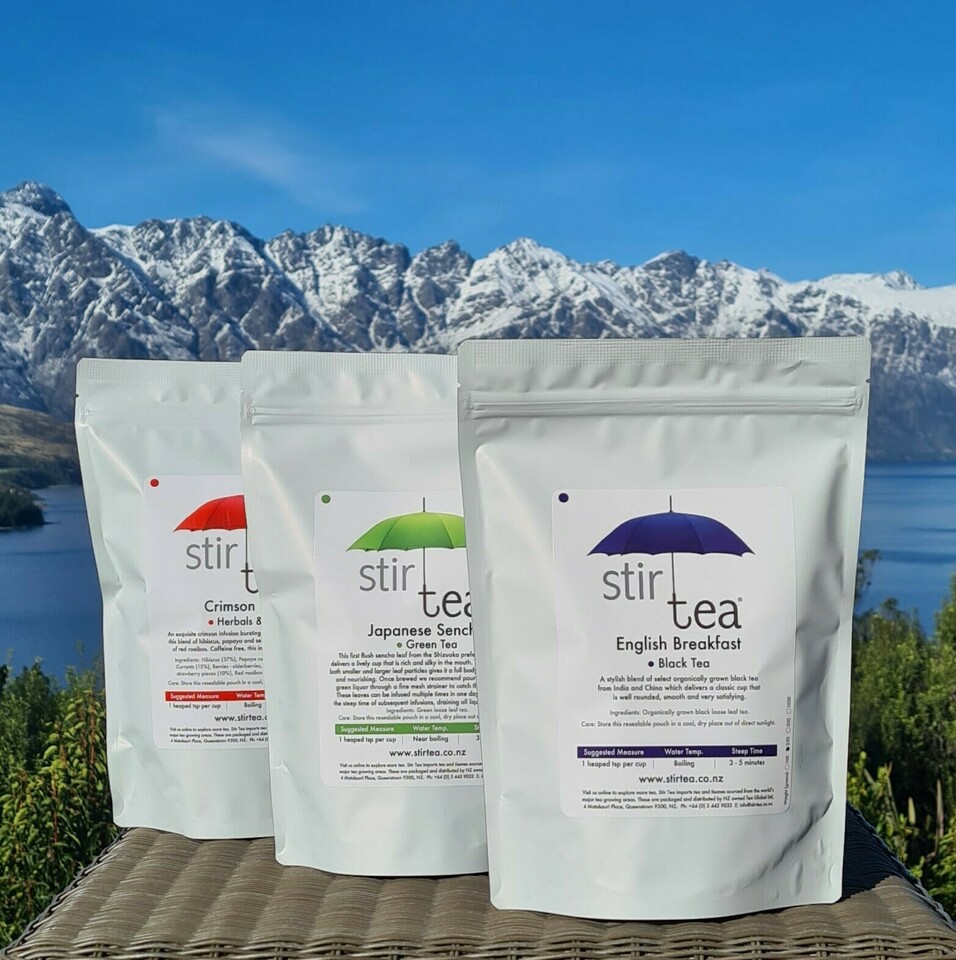As you immerse yourself more deeply into the world of tea, you will find a wide array of tea leaf on offer. There are different leaf styles within categories of tea – some are small or large open leaf, some tightly curled leaf or small particle leaf.
This then begs the question, how much dry tea leaf should be used to make your cup or pot of tea?
In the professional world of tea, we use weight rather than volume to measure the amount of tea leaf to use when brewing a cup of tea. The industry standard is 3 grams per 250 ml cup and this is a helpful piece of information if you have measuring scales handy. However, it can be a challenge to gauge this visually by simply looking at how much tea is on a spoon.

Traditionally if you grew up in a tea drinking household you were probably told – one teaspoon per person plus one for the pot. This is a great starting point for smaller leaf teas and is easy to remember but if you are working with larger leaf teas then you may need to consider using more tea leaf.
Understanding the basics:
Brewing the perfect cup of tea requires attention to some simple key elements. These include making choices on the optimal measure of tea which suits the tea leaf type, your preferred liquor strength, size of your brewing vessel, the style of tea you are making and the number of infusions required. Let's take a look at each of these individually:
- How Much Dry Tea Leaf Should I Use?
Dry tea leaf has many different forms. This can leave some people feeling that they are using more tea leaf when brewing loose tea than when they use a tea bag. That might be true from a visual cue, due to the fine tea particle grade that might be present in the tea bag. However, if the teas were to be weighed individually, there may not be much weight difference between them at all.
Whole leaves that are large and haven’t been tightly rolled, will be bulky and have more volume than tea leaves that were rolled into smaller shapes or even partially broken during processing. Great examples of these from our Stir Tea range includes the voluminous Silver Needle vs our smaller hand rolled leaf Jasmine Pearl green tea. Our picture shows 3 grams of each of these teas and you can visually see the difference.
This means that, to get the same depth of flavour as you would from one teaspoon of small leaf black or green tea, you may find you need to use a tablespoon of the more voluminous white teas – both are the same weight, but one looks to have so much more leaf. This is evident also from the packet sizes of teas and how the same weight can vary so much. This is an obvious point but a useful visual cue – larger leaf size requires a larger volume measure.
- Preferred strength:
If you like your tea brewed stronger or weaker, we recommend you simply adjust the amount of tea leaves that the brewing directions call for (rather than reducing the steep time). Look for the Brewing Guidelines which can be found on the front of each packet of Stir Tea for specific recommendations.
- Know the size of your brewing vessel:
It is always an honour to be asked to make and pour tea – you are known as the guardian of the teapot. To ensure you discharge your responsibilities in the best possible manner always make sure you know the capacity of the teapot. Teapots do vary in the quantity of liquid they can contain depending on how many standard cups (250ml) they will hold. So before you start, measure the capacity of your teapot in mls, by simply filling the teapot with water and pouring into a measuring jug. Then simply apply some maths – dividing the mls by the 250 ml standard cup size and you will have the magic number for how many standard cups your teapot is and then either weigh or measure your tea leaf based on this.
If brewing directly into a tea cup or mug we also recommend you get to know your cup size – is it a standard 250 ml or a larger measure? Once again this seems so basic but if you have ever experienced upgrading a take out tea to a larger cup size only to find more water is added rather than more tea you will understand why we are making this point.
- Style of Tea - Are You Making Hot or Iced Tea?
If you are preparing iced tea you will usually need to double the amount of tea leaf you place in your water. Read our Iced Tea Hints and Tips for more detailed information on making iced tea.
- Multiple Infusions - The value in your loose leaf - extend the use of your leaf with multiple steeps
Many of our green and white teas can be steeped more than once over the course of the day, and is a great way to extend the life of the tea leaf. Each steeping will yield a slightly lighter flavour than the previous one. Simply drain the leaf on brewing and set aside to use again. Steep each subsequent brew a little longer.
- Your personal preference
Keep in mind that the industry standard measurement doesn’t take into account your personal tea drinking preferences. Maybe you like your tea brewed strong, or perhaps you like to sip teas that are mild. While we outline our Brewing Guidelines on the front of each packet of Stir tea, this is just a starting point, as is our downloadable Guide to Brewing the Perfect Cup of Tea. Often it may take one or two cups of experimenting to find your preferred measure of leaf.
If you are unsure it is better to start at the stronger end of the scale, you can always add more water, but you can't rescue weak tea. From here you can develop your own preferred brewing style from, and having an awareness of, the leaf size, brewing vessel, number of infusions, and type of tea you are preparing.
We invite you to visit our online tea store to view the full Stir range of camellia sinensis (tea leaf) and caffeine free herbals and fruits.
Posted: Saturday 27 July 2024







